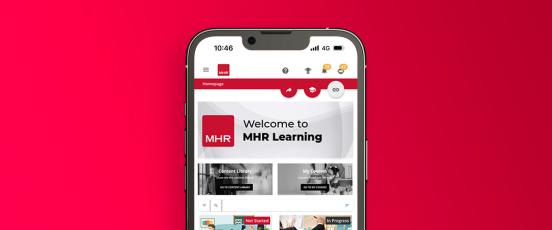Meeting your Learning Management Software (LMS) needs

There are many great Learning Management Systems (LMS) out there, so picking the right one for your organization can feel like a big challenge. This blog talks about the important features you should look for and how to figure out what you need from your LMS software.
Understand your LMS needs
To really understand which Learning Management System (LMS) fits your needs, you have to know what you're looking for. Every organization has its own long-term goals that a learning and development (L&D) department can help achieve. With the right LMS, you can support these goals. Whether it's increasing employee involvement or making sure rules are followed, picking the right LMS can bring many great advantages.
Key features of an effective LMS
There are three essential features to look for in a Learning Management System (LMS):
Content Creation and Management
The value of an LMS largely depends on its content. Tools for creating content allow you to develop effective e-learning materials that cater to various learning styles. The best tools focus on multimedia, enabling you to produce articles, videos, or even webinars.
After creating content, managing it is crucial to ensure it's fully utilized. Content management helps you highlight important modules and deliver the right content to the right learners at the right time.
Gamification and learner engagement
Informed decision-making is key to a successful e-learning strategy, which requires accurate data analytics and reporting. A quality LMS will provide a variety of analytics features, such as tracking login rates, offering insights into departmental performance, and showing which courses are most popular.
Technical aspects of an LMS
In addition to the main features, there are three technical requirements you should look for in a Learning Management System (LMS):
Integration with other applications
An LMS should not operate in isolation from your other HR systems. Integration with other solutions, like talent management systems, is crucial for achieving comprehensive reporting and higher engagement levels.
Security Features
LMSs handle sensitive information, so it's important they have strong security measures to protect this data. Features to look for include backup data storage, IP blockers, data encryption, and multi-factor authentication.
Mobile Accessibility
A user-friendly LMS is essential for maximizing engagement. Mobile accessibility improves the LMS user experience by allowing employees to access the system from anywhere.
Choosing the right LMS for your business
While many LMSs may have the features you need, finding the right one can still be challenging. The best LMS for a business isn't about a one-size-fits-all solution; it's about finding one that aligns with your business goals and offers a good user interface and experience.
You should also consider the pricing structure of a potential LMS:
Pay per active user
With this model, you pay only for users who actively use the system. This is a good option if you're unsure about the return on investment.
Fixed number of users
This approach charges you for each person granted access to the system. It can be more cost-effective for smaller businesses compared to paying for a full, expensive license.
Flat fee
This straightforward model involves a single fee for using the LMS over a certain period, typically including licensing, setup, and hosting costs. It's helpful for budgeting but may feel restrictive.
Monthly subscription
You're billed monthly and can cancel the subscription when it suits you. This might be more expensive in the long run, but it offers flexibility if you need to opt-out. Even if a system meets your needs, it could be too expensive. Make sure you understand the costs before committing to any LMS.
Implementing your LMS successfully
Choosing the right LMS involves more than just making a purchase; it's about how well you implement it, which is a process with several stages.
Rolling out your LMS
Assemble a team dedicated to launching your LMS. This team should include a project manager and a learning specialist, along with content developers. It's also beneficial to have a representative from each department to provide feedback during the rollout. Your LMS provider may offer support for the rollout, possibly at an additional cost, but they typically aim to ensure a smooth transition as it reflects positively on their service.
Training and support considerations
Most employees will need training to use a new system effectively. Investing time in training helps everyone become comfortable with the system, which can lead to quicker and better returns on your investment.
Your LMS provider may also have unique training materials to help address any difficulties.
Measuring success and ROI
To determine if your LMS is effective, you'll need to use its reporting and analytics tools to set clear, measurable KPIs. The KPIs you choose will depend on your desired outcomes, whether that's high employee participation for compliance or fostering a learning culture to increase engagement.
Knowing what success looks like for your organization will help you achieve a faster return on investment.
How our LMS meets your needs
Our LMS platform meets the requirements of a wide variety of businesses. If you're in search of a system that aligns with your business objectives while remaining cost-effective, we're here to assist.
Interested in seeing what our LMS has to offer? Contact us to schedule a demo.



